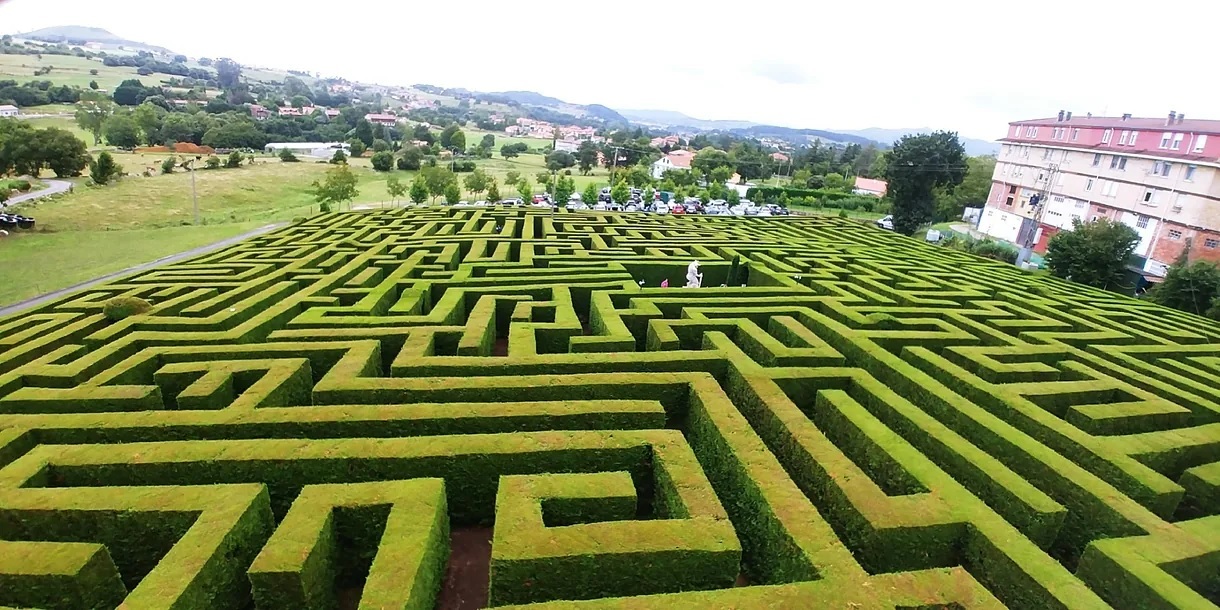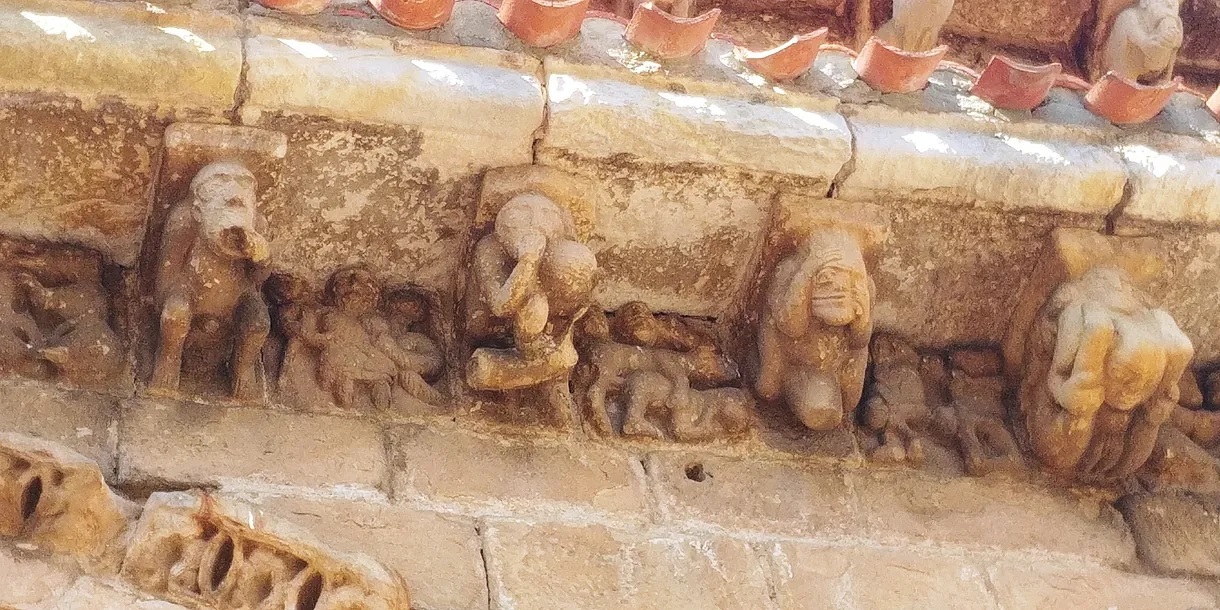Various sensations arise when leaving the plateau at the Palencia border and encountering the sign for 'Infinite Cantabria'. A premonitory detail is the menhir that can be glimpsed from the AP-67 near Villanueva de Henares perfectly aligned on the border of two fields 10 kilometers from the Cantabrian divide, announcing the presence in the Valdeolea region. One thinks of that movie by the Greek director Theo Angelopoulos, Eternity and a Day, because without prior notice, upon leaving the rocky and brownish area of Reinosa and entering the first of the tunnels that lead to the Cantabrian Sea, suddenly one finds oneself in a valley of unknown greenery. But it is when crossing the second bridge and preparing to descend the magnificent civil engineering work that is the Montabliz viaduct, that one has the sensation of having crossed an interdimensional door and appeared in a new reality.
Cantabria, a single-province community historically known as The Mountain, can be crossed from its eastern end in Castro Urdiales to go buy the famous Unquera ties, bordering Asturias, in just over an hour. A little more time is needed to cover the distance between the El Sardinero beach in Santander and the town of Polientes on the early Ebro river. We begin our particular route through unknown Cantabria in these places, specifically in the Valderredible valley. Its etymology is none other than the valley of the banks of the Iber, that is, of the Ebro river.
It is in this valley where sandstone rock constitutes the predominant geological formation of a large part of the territory, a reason that led to a great concentration of rock hermitages from the 7th century onwards, often with their adjacent necropolises, which served as a refuge for the hermits and anchorites who moved to this place in the early days of Christianity. They were places of worship or retreat used by cenobites who voluntarily withdrew from worldly life. These monks, who constitute the embryo of peninsular monastic life, adapted their retreat hermitages by excavating and emptying a physical rocky space, such as a natural cave or a rocky shelter.
The first hermitage we encounter is that of Santa María de Valverde, a place where worship is still held, and it is the starting point, with the interpretation center of the rock hermitages, to continue the route along the local road 272, which winds parallel to the Ebro. Very close to the river appear the churches of San Miguel in Campo de Ebro and the Virgen del Carmen in Cadalso. A little further away is the imposing two-story hermitage of San Acisclo and Santa Vitoria in Arroyuelos, with a horseshoe arch, apse with a barrel vault, and horseshoe-shaped plan. It is the most architecturally complex of the rock hermitages in Cantabria and one of the most important of all known in the Northern Plateau, both for its size and its excellent preservation.
We continue our journey northward stopping at the secluded Montesclaros Sanctuary, built on a cave that may have been a hermitage's dwelling. One of its greatest treasures is the impressive collection of butterflies (like in the movie The Silence of the Lambs), which one of the monks, the missionary Fernando Llobat, an entomologist, brought from places as distant as Peru, Madagascar, Spain, Malaysia... It is not an exaggeration to say that it houses many of the most beautiful and largest specimens on the planet. Excavations from the last century found a pre-Romanesque crypt with a Ramirentine-style stone altar and Celtic symbolism on the front, and the sarcophagi of two knights of the Order of St. John of Jerusalem.
We leave the area of Los Carabeos to continue the route towards the source of the Ebro, stopping to contemplate the unsuspected Romanesque collegiate church of San Pedro de Cervatos
From the source of the Ebro, one can venture, climbing through the Palombera Pass, into the Saja Reserve, a dense forest of beeches and oaks, where the Saja River navigates stones and gorges to culminate gently in the Cantabrian Sea. Right on its bank, we can eat at Mesón La Florida beans with venison (or wild boar), which are exquisite due to the location, topped with their cheesecake, before continuing on to the picturesque village of Bárcena Mayor, a prime example of mountain architecture, declared a historic-artistic ensemble in 1979. From here, one follows the course of the Saja to reach the coastal town of Suances and contemplate magnificent views of the cliffs of Costa Quebrada from its lighthouse, one of the most relevant geological sites in the world, while enjoying some fried squid (a must-have dish throughout Cantabria) at El Castillo de los Locos. It is the area where secluded paradisiacal beaches are hidden among imposing cliffs.
Nearby, we can take the children (if any) to get lost in the Villapresente Labyrinth, the largest in Spain, with five kilometers of corridors. It only needs to be snow-covered to imagine ourselves in the end of the movie The Shining, because it is a very well-designed labyrinth. There is a viewpoint to contemplate its layout from a bird's-eye view. And just a fifteen-minute drive from there, on the Cantabrian motorway, is the Natural Monument of the Sequoias of Monte Cabezón. The sequoias were planted in the 1940s thanks to the self-sufficiency policy of the early Franco years, with the intention of minimizing external dependence and imports, including those of forest raw materials. One can imagine, walking among such a magnificent tree mass, like James Stewart in Vertigo.
From here, half an hour away, going up a winding road, you can access the monumental El Soplao cave, one of the many in Cantabria, like Altamira, not being an example of prehistoric art but a geological wonder of nature, as it holds a true paradise for speleology (stalactites, stalagmites, flows, columns, cave pearls, dogtooth spar, etc.). Ending a day in Cantabria is special if done while contemplating the sunset over the sea, looking west, from the Liencres Dunes Natural Park, which can be reached by taking a walk through its cool pine forest.
These are just some of the hidden treasures in infinite Cantabria, avoiding the most visited sites, although they are also worthy of a visit. Cantabria is a unique paradise, sea and mountains, with a unique microclimate that attracts caravans from all over Europe, where during the summer it is common for the maximum temperature to be half, half! of the maximum in Madrid. And, with luck, some days it rains.

